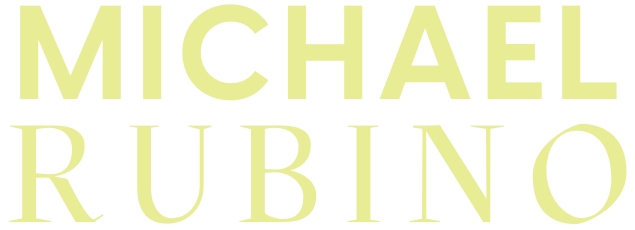For many individuals, pets are a member of the family. Whether you're living alone or with a partner, a young adult or recently retired, or somewhere in between, these little furry, fuzzy, scaly, and feathery friends occupy a special place in our hearts. As they're our best friends and pet children, we want the absolute best for these animals, from researching the top food brands and safe toys to ensuring their cleanliness and scheduling annual vet checkups. One factor that doesn’t always get considered in our quest for the best care is mold and pets.

What impact can this fungus among us have on their health? Does it even affect them at all?
For many, it’s a line of questioning that makes you go, "Huh, I didn’t even think of that," which isn’t surprising considering the lack of discussion and awareness about this indoor contaminant in society. As more and more individuals speak out about the impact living in a toxic indoor environment had on their health, though, it’s important to extend that awareness to animals as well. If exposure can affect human health, it makes sense that mold and pets do not go together in the slightest. Especially considering that, for many animals, a majority of their lives are spent indoors.
To ensure our animals are protected from toxic indoor environments and live healthy, merry little lives, it’s important for owners to understand the relationship between mold and pets, what to do if they expect their pet to be suffering from exposure, and how to keep a home safe. Considering that the 2021–2022 National Pet Owners Survey conducted by the American Pet Products Association (APPA) showed that 70 percent of U.S. households own pets and water-damaged buildings are on the rise, it’s more important than ever to begin including this in pet maintenance.¹ For owners of all varieties, here’s what you need to know.
But First, Mold
Before jumping into the relationship between mold and pets, it’s important to understand exactly what is impacting them in the first place. Aka, Mold 101.
All About Mold
So far, researchers have identified over 100,000 species of mold so far. Each species reproduces by creating and releasing microscopic particles called spores into the surrounding environment.²’³ Similar to seeds, these spores are non-living particles and will remain that way until they stumble on a habitable surface.
Being the hardy little fungus that it is, mold typically only needs two main components for a mold spore to begin growing: a food source and a water source.⁴ If these are present for 24–48 hours, a lucky spore will transition into a living organism and start to grow on the surface it landed on. Also, like plants, mold colonies send out roots called hyphae into the surface they're growing on, making proper remediation particularly difficult.
In nature, this event is a necessary component for environmental balance as mold plays a key role in processes such as decomposition. When spores transition into the world of the living in a home, however, toxic indoor environments are formed.
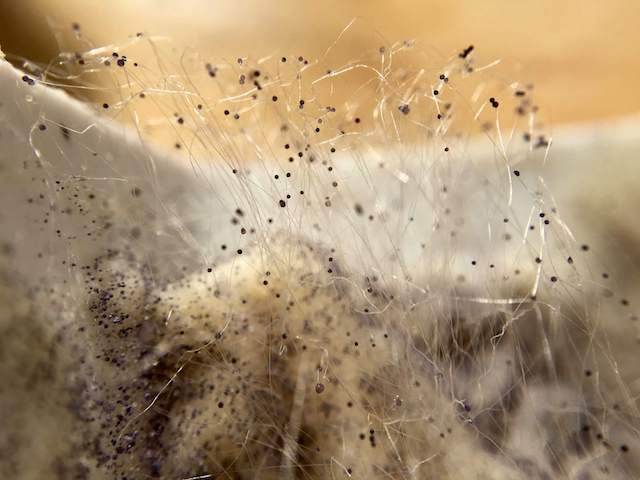
A Home with Mold and Pets
When mold grows in nature, all of the microscopic particles released are dispersed throughout the great big world. Spores created by a colony indoors don’t have the same luxury. Thanks to modern building practices pushing for net-zero energy efficiency, there’s very little air flow between indoor and outdoor environments. While great for electricity costs, this new trend means that most of the particles released by a colony indoors remain trapped within that space.
Hence, why the misconception that since mold is everywhere, it’s no big deal if it’s in a home is wrong. Mold growth indoors creates a much more potent exposure because there’s a much higher volume of particles in a relatively small space (compared to the entire world, that is).
The longer the colony exists in the home, the more spores will be floating around in the air and landing on whatever surfaces they come into contact with. Some species of mold also release microscopic toxins called mycotoxins, further adding to the particle party in that indoor space.⁵ The kicker here is that since the particles are invisible to the naked eye, all of this contamination can exist in a home without notice and affect the health of those living inside.
Mold and Pets: The Health Debacle
One of the main issues with the lack of focus on mold and how our indoor environments affect health is the absence of research dedicated to these topics. While more studies are slowly beginning to trickle out, researchers still aren’t sure about the mechanisms behind how this indoor contaminant affects the body and how extensive the impact can be. When it comes to mold and pets, even less research has been completed in an attempt to determine how toxic environments impact their bodies.
That being said, just because we don’t yet understand the mechanisms behind how mold can impact health, doesn’t mean that it’s not a problem. Several individuals who have shared their stories in the Mold Talks podcast have mentioned the impact exposure had on their own pets while living in a toxic environment, on top of the health effects they experienced themselves. Between a long list of adverse health reactions and related diseases in humans, it can pack a powerful punch on those living inside.
Its ability to affect health largely rests on the size of the particles in question.
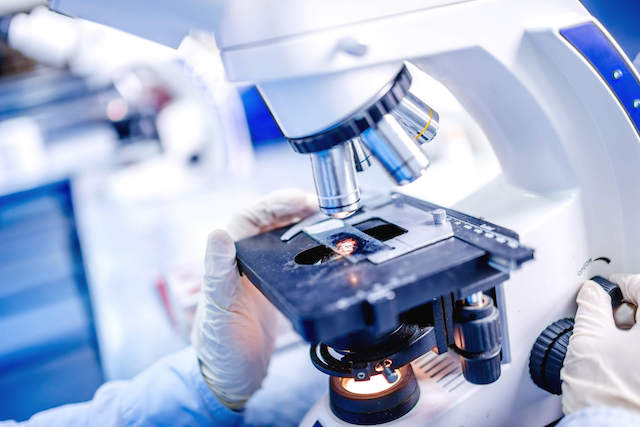
Both spores and mycotoxins are measured in a unit called microns, which is 1/1,000 of a millimeter. To put it into perspective, you’d have to line up 1,000 microns to equal the distance between the two tiny lines on a ruler. The EPA classifies these types of particles as particulate matter and breaks them down into two categories.⁶
These two categories are:
- PM10: particles that have a diameter of around 10 micrometers or less.
- PM2.5: fine particles that have a diameter of around 2.5 micrometers or less.
Their tiny size means that these indoor contaminants are able to be inhaled, ingested, and absorbed into the body.⁷ Some of them are so small that they can bypass the body’s defensive systems and zoom straight into the bloodstream. Once the contaminants have made their way inside, the body will tag these particles as foreign invaders and deploy the immune system to get rid of them as soon as possible. This immune response is often what leads to issues down the road. ⁸’⁹’¹⁰’¹¹
How Can Mold Impact Pet Health?
Most pets spend most of their time in homes, so they’re constantly exposed to whatever is in that indoor environment. As mentioned above, if it’s filled with particles like mold spores and mycotoxins, these contaminants are making their way into your pet’s little body all day every day, either through inhalation, absorption through a little cut, or ingestion by eating or licking all of the random things pets tend to get into, whether they should or not. While there aren’t nearly enough studies explaining the impact this can have on their health and the mechanisms behind its effect, it’s easy to see the potential relationship by taking a closer look at the similarities between their bodies’ defensive mechanisms and humans’.
Like humans, pets have immune systems to support and protect their bodies.¹²’¹³ As mentioned above, if harmful particles like mold spores and mycotoxins enter the body, it sparks an immune response, and that’s where problems can arise. The ongoing onslaught of particles entering a pet’s body can lead to the immune system becoming overwhelmed, overworked, and potentially malfunctioning, opening the door for adverse health reactions. This exposure can also lead to chronic inflammation throughout any portion of their body, triggering a wide range of potential symptoms and potentially dire consequences.
For example, in 2007, one veterinarian found pulmonary hemorrhages in two cats during pre-op procedures, and their report noted that both pets came from a home contaminated by mold. Unfortunately, both cats passed away due to complications.¹⁴
Reactions such as these are why mold and pets should never go together.
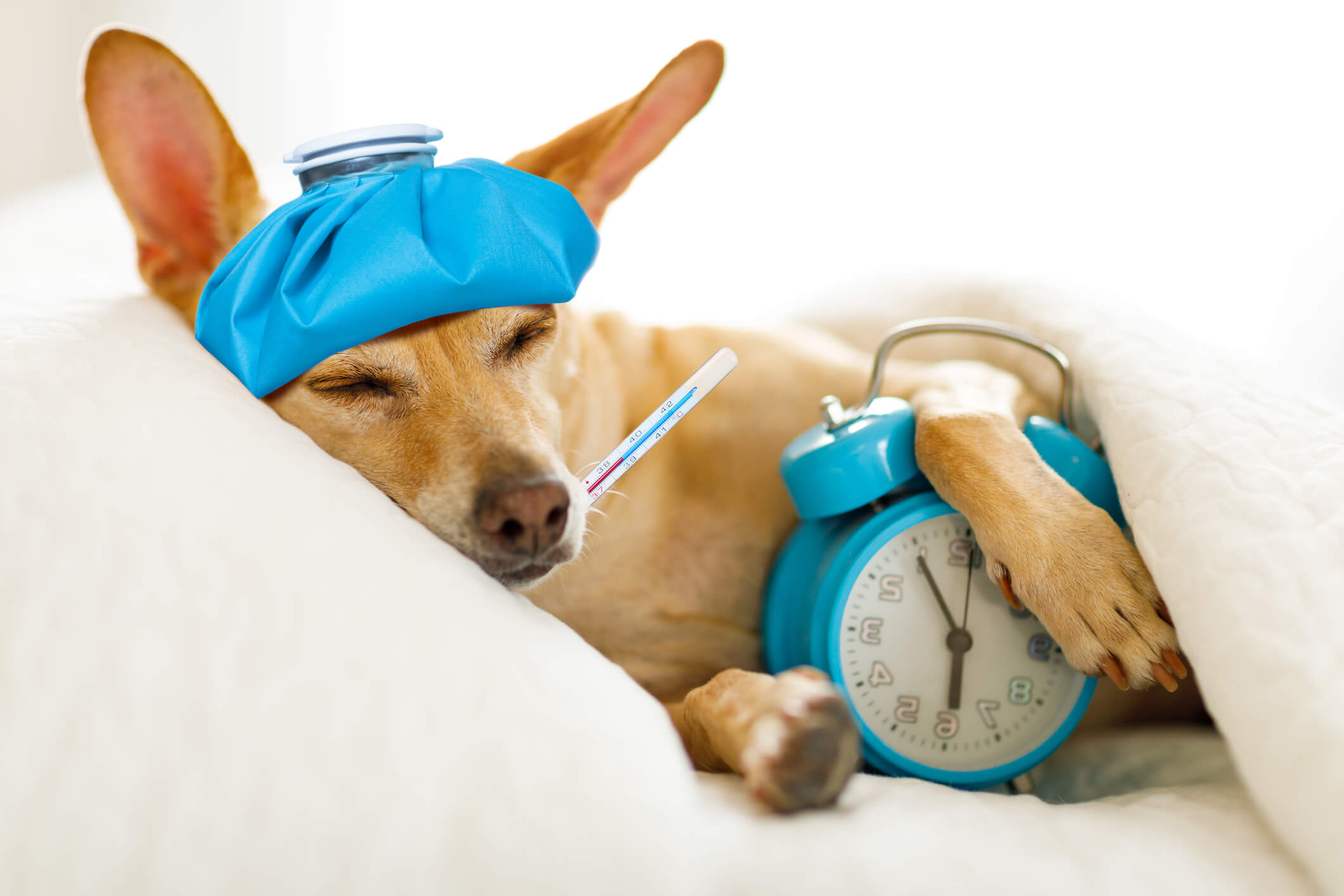
Some common symptoms related to mold exposure include:
- Scratching and licking excessively
- Nasal discharge
- Difficulty breathing
- Rashes
- Fur loss
- Lethargy
- Changes in appetite
- Vomiting and/or diarrhea
- Tremors
- Seizures
- Nose or mouth bleeding
As mold exposure creates a systemic response, symptoms can span the entire pet’s body, making diagnosis potentially difficult.
Like humans, the presence of an immune system means that pets can develop autoimmune diseases and infections as well.¹⁵ Aspergillosis is one example.¹⁶ While the causes of autoimmune diseases in animals are not well understood yet, researchers and medical professionals theorize that factors such as genetics and environmental exposures can play a role. With mold particles and byproducts able to enter a pet’s body and wreak havoc on their health, this definitely qualifies as environmental exposure.
The issue here is that no two people or pets respond the same way to exposure. A variety of factors play a role.
These factors include:
- Genetics
- Presence of mycotoxins
- The volume of exposure
- Immune system status
- Species of mold
- Presence of bacteria
- Length of exposure
At the end of the day, the potential for mold and pets to establish a toxic relationship is reason enough for us pet owners to know what steps to take should a fungus catastrophe occur and how to prevent it from happening in the first place.
Mold and Pets: A Prevention Strategy
The best way to deal with mold and pets is to stop them from ever meeting in the first place. That means taking extra steps to prevent mold growth in the home and on your pet’s things. The key here is to remember that mold spores typically only need food and water to begin growing, and they only need these components to be present for 24-48 hours. Preventing mold growth largely involves reducing these factors.
Steps to prevent indoor mold growth include:
- Placing the bag of pet food in a sealed container: This reduces the amount of moisture and mold spores that can get inside of the bag and start growing on the food.
- Wash food and water bowls daily: Using mild soap and warm water, thoroughly clean the bowls and allow them to dry before placing them back in their designated spot.
- Deep clean bowls every two weeks: Soak the bowls in white vinegar for half an hour and then wipe them with a microfiber towel. Then wash them with mild soap and warm water. Allow them to dry completely before putting them back.
- Clean cages and accessories every two weeks: Using a botanical cleaner like Benefect Decon 30, thoroughly spray every nook and cranny of the surface and allow the product to sit for at least 30 seconds. Wipe this away with a microfiber towel and allow the surface to dry completely before replacing the cage. For accessories, soak in a mixture of white vinegar and water, wipe with a microfiber towel, and then gently wash with
- Deep clean often: Using a HEPA vacuum, botanical cleaning products, and microfiber towels, deep clean floors, furniture, appliances, mattresses, windowsills, and everything else in between. This will remove edible options for mold and mold spores that have managed to get into the home.
- Litter box maintenance: Make sure to scoop the box every day, replace the litter on time depending on the number of animals using it, and clean the box at least once a week using gloves, a botanical cleaner, and microfiber towels, and follow this up with mild soap and water.
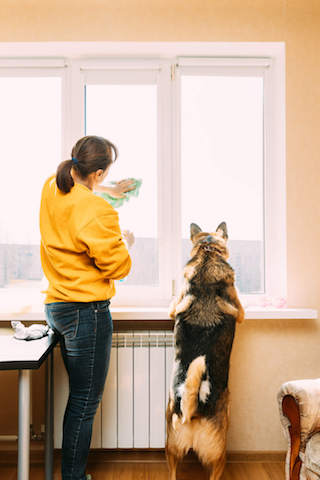
- Opt for stainless steel or ceramic bowls: Plastic is porous, meaning that it can retain water in tiny pockets, allowing mold to grow. It also scratches easier than other components like stainless steel, leaving little cracks and crevices to retain moisture and particles, creating a perfect moldy environment.
- Wash beds and toys weekly: Throw all fabrics, such as beds and toys, into the washing machine with a botanical cleaner like EC3 Laundry Additive. This will help remove edible particles and mold spores from the items. For other toys, soak them in white vinegar for five minutes and then wipe them with a microfiber towel. Follow this up by gently washing it with mild soap and warm water.
- Maintain indoor humidity levels between 35 and 50 percent: Humidity levels above 60 percent can promote mold growth.¹⁷
- Consider investing in air purification: These machines help remove harmful particles like mold spores and mycotoxins from the indoor environment. I personally recommend Intellipure products, as they capture and eliminate 99.99% of particles as small as 0.007 microns in size.
- Clean up any spills and fix leaks immediately: Mold can grow in as little as 24 hours, so removing the moisture as soon as possible is key.
- Routinely inspect mold hotspots: Take a look around the home at places mold is prone to growing, including the kitchen, bathroom, appliances, attic, basement, underneath sinks, HVAC unit, basement, and crawlspaces. The sooner you catch a problem, the less contamination it will be able to spread throughout the home.
This isn’t a full list of preventative actions, but it’s a great starting point. Depending on the pet in question, there could be a variety of other steps you can take as well to prevent mold growth, so make sure to thoroughly research the topic and discuss it with professionals to see what you can add to your pet care routine.
Keep in mind that one thing you should never use is bleach.¹⁸ Not only is it toxic for pets, but it also isn’t a good cleaning product to use in your battle against mold.
Mold and Pets: Is It a Problem for Your Animal Child?
Sometimes, mold growth happens in a home even with a solid preventative routine in place. In these instances, it’s important to know how to handle the situation so that your pet isn’t facing continual exposure and the health impact that goes along with it.
How Do You Know If You Have a Mold Problem?
If you, your pet, or other family members start to experience random and chronic symptoms, always remember to consider your indoor environment in any potential diagnosis. Contaminants like mold aren’t always the root causes of symptoms and illness, but they should always be brought to the table as a potential culprit.
If you suspect a problem, first take a close look at all of your pet's things, including toys, food, bowls, cages, accessories, and anything else they regularly use. If nothing pops up, check out the home. Grab a flashlight and look at every nook and cranny you can access, including places like the attic, basement, and crawlspaces. Make sure to use your nose as well. Mold often creates an earthy, musty, damp odor due to the release of gasses called microbial volatile organic compounds (MVOC).¹⁹
If neither search turns up mold but you’re still concerned that there’s a problem, hiring a qualified mold inspector is your best bet. This individual will spend hours thoroughly going through the inside and outside of the house and conducting extensive testing using a variety of methodologies to see what’s going on in the home.
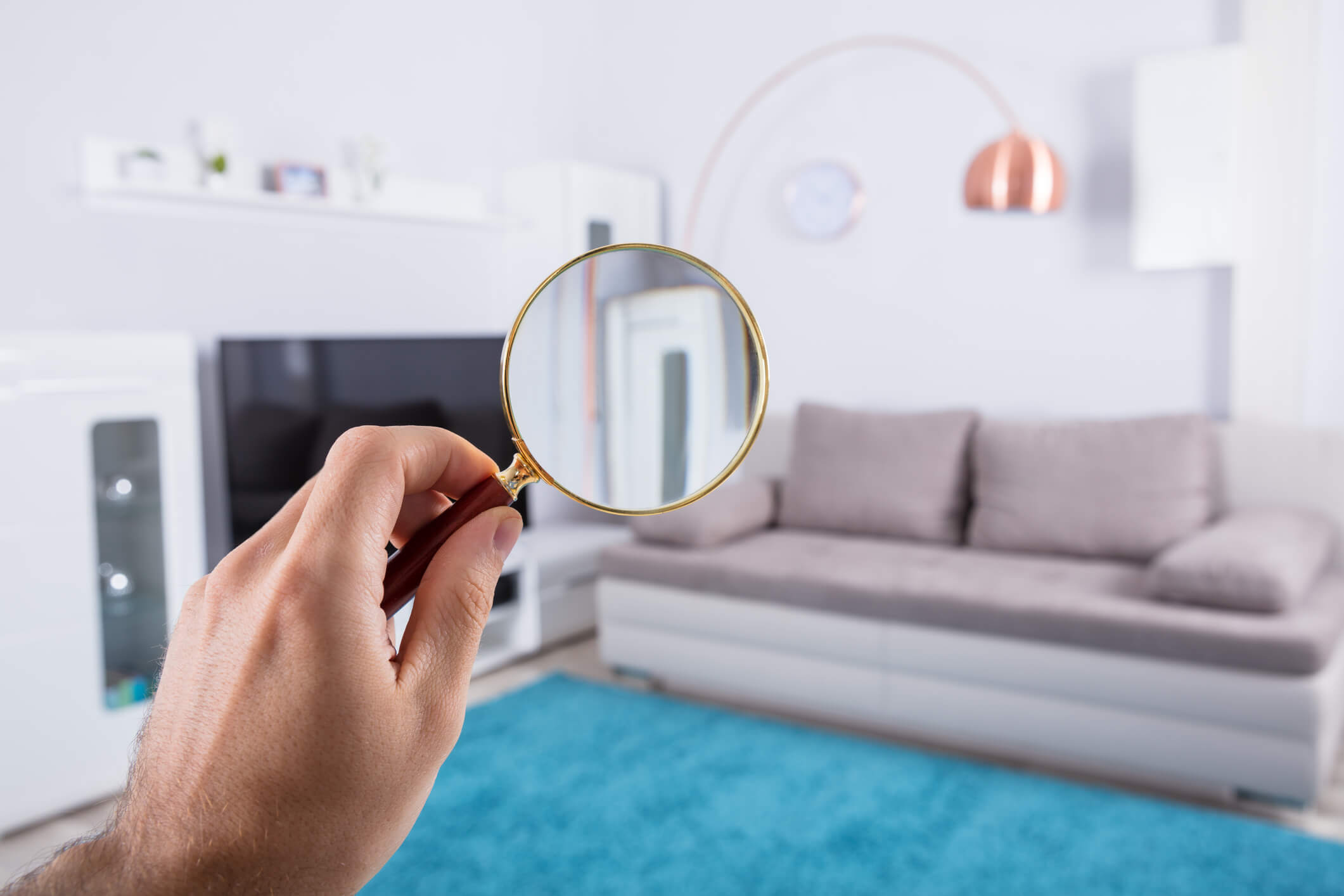
Data you should expect to see includes:
- Types of molds present
- Quantities of each mold
- Potential spore presence in the HVAC system
- Presence of mycotoxins
- Presence of bacteria
This will give you an accurate snapshot of what’s going on inside of your home and whether your pet’s symptoms could be caused by a toxic indoor environment.
Another option is to ask your vet if tests are available to determine if toxins are present in your pet’s body that could be triggering the symptoms.
You Found Mold, Now How Can You Keep Your Pet Safe?
The first step in dealing with mold and pets is to remove them from the environment. They won’t be able to heal in the place that’s making them sick in the first place.
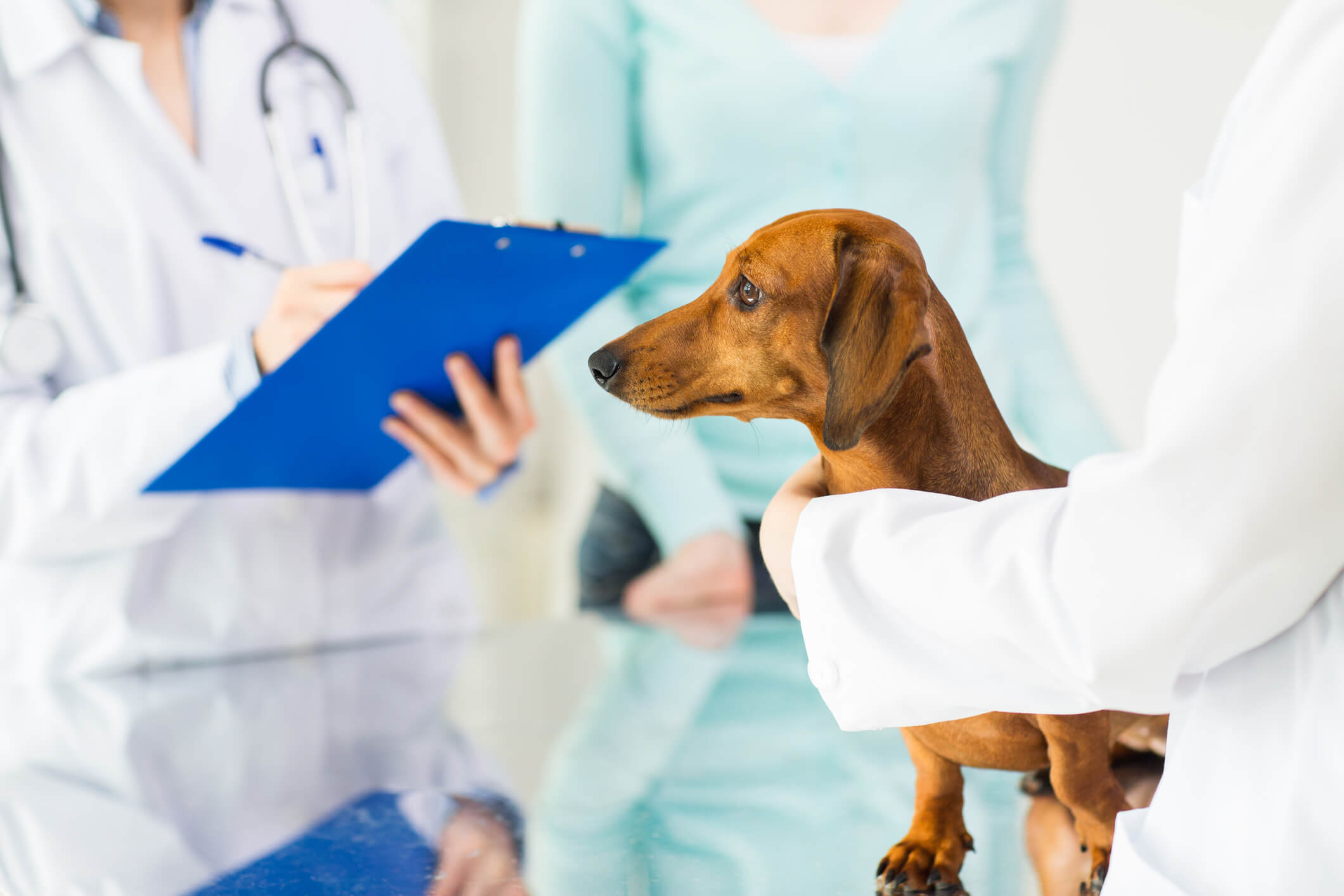
From there, find a veterinarian familiar with mold toxicity in pets and schedule an appointment with them as soon as possible. After conducting tests, they’ll start your pet on a treatment plan unique to the situation. Oftentimes, this includes things like detoxifying supplements, steroids, or blood transfusions.
While you and your vet get started on healing your pet, the contamination in the home also needs to be dealt with and eliminated.
Small Fish
To remove a small mold problem from a home, you’ll need a proper cleaning protocol and the right products for the job. The main thing to keep in mind is that all of the contamination needs to be removed. That includes the mold colony, the roots, and other particles like mycotoxins and bacteria present in the problematic area. The surrounding space also needs to be decontaminated as well, since those particles flew all over the place.
When in doubt, always consult an expert to get their opinion on the matter. HomeCleanse also offers a Contents Cleaning Kit and a Home Detox Box available to buy to get you started on the path to success.
That being said, for hypersensitive individuals, it’s often best to steer clear of mold remediation and opt for a professional to come in instead to eliminate the risk of excessive exposure and any related symptoms.
Big Fish
If you found the mold yourself and didn’t hire a mold inspector, bring in a professional to determine the extent of the contamination problem in the home. They’ll tell you what contaminants are present and how many issues there are throughout the house. Oftentimes, there are multiple colonies existing inside, not just the one you discovered.
With this data in hand, a qualified remediation team will be able to come in and properly decontaminate the home. This team should understand how important their task is and prioritize the health of everyone in the home, including pets. For the best success, a remediation protocol should always include three main pillars.
These pillars are:
- Remediate the sources properly.
- Identify and address the problems that led to those sources in the first place.
- Eradicate all contamination created by those sources, including toxins and bacteria.
Each of these boxes must be checked off in order for mold and pets to no longer be a problem in your life. If the source isn’t fixed, mold growth can come right back. If contaminants like mycotoxins and bacteria are left behind, exposure-induced symptoms can persist. Every piece of the puzzle is crucial to creating an environment that once again supports the wellbeing of those living inside.
Once the remediation team leaves, the home should once again be a safe space for you, your family, and your pets.
Ensuring Your Pets Are Healthy and Happy
At the end of the day, everyone wants to ensure that pets are taken care of to the best of their ability. Mold and pets is a factor that is often overlooked, but it can still have a negative impact on their quality of life. This makes it something all owners should strive to avoid.
By increasing our awareness of this indoor contaminant, pet owners will know what to look out for, actively work to prevent growth, and have a plan in place in case indoor mold growth occurs. All of these nuggets of knowledge are phenomenal steps to ensure our pets can continue to be the treasured family members we all love. Everyone (animals included) deserves to live in a home that supports their ongoing wellbeing, especially considering how much time we spend in these indoor spaces!
Health begins at home.™

Citations:
Facts + statistics: Pet ownership and insurance. Insurance Information Institute. (n.d.). Retrieved May 3, 2022, from https://www.iii.org/fact-statistic/facts-statistics-pet-ownership-and-insurance#:~:text=Seventy%20percent%20of%20U.S.%20households,and%2067%20percent%20in%202019.
Environmental Protection Agency. (n.d.). Mold. EPA. Retrieved from https://www.epa.gov/mold.
Centers for Disease Control and Prevention. Basic facts about mold and dampness. Centers for Disease Control and Prevention. Retrieved from https://www.cdc.gov/mold/faqs.htm.
Lstiburek, J., Brennan, T., & Yost, N. (2002, January 15). Rr-0208: What you need to know about mold. Building Science Corporation. Retrieved from, https://www.buildingscience.com/documents/reports/rr-0208-what-you-need-to-know-about-mold/view.
World Health Organization. (n.d.). Mycotoxins. World Health Organization. Retrieved from https://www.who.int/news-room/fact-sheets/detail/mycotoxins.
EPA. (n.d.). Health and Environmental Effects of Particulate Matter (PM). EPA. Retrieved from https://www.epa.gov/pm-pollution/health-and-environmental-effects-particulate-matter-pm.
Nchh. (n.d.). Mold. NCHH. Retrieved from https://nchh.org/information-and-evidence/learn-about-healthy-housing/health-hazards-prevention-and-solutions/mold/
Curtis, L., Lieberman, A., Stark, M., Rea, W., & Vetter, M. (2004). Adverse health effects of indoor molds. Journal of Nutritional & Environmental Medicine, 14(3), 261-274.
Bush, R. K., Portnoy, J. M., Saxon, A., Terr, A. I., & Wood, R. A. (2006). The medical effects of mold exposure. Journal of Allergy and Clinical Immunology, 117(2), 326-333
Fisk, W. J., Lei-Gomez, Q., & Mendell, M. J. (2007). Meta-analyses of the associations of respiratory health effects with dampness and mold in homes. Indoor air, 17(4), 284-296.
Wild, C. P., & Gong, Y. Y. (2010). Mycotoxins and human disease: a largely ignored global health issue. Carcinogenesis, 31(1), 71-82.
Pereira, M., Valério-Bolas, A., Saraiva-Marques, C., Alexandre-Pires, G., Pereira da Fonseca, I., & Santos-Gomes, G. (2019). Development of Dog Immune System: From in Uterus to Elderly. Veterinary sciences, 6(4), 83. https://doi.org/10.3390/vetsci6040083
Felsburg PJ. Overview of immune system development in the dog: comparison with humans. Hum Exp Toxicol. 2002 Sep-Oct;21(9-10):487-92. doi: 10.1191/0960327102ht286oa. PMID: 12458905.
Mader DR, Yike I, Distler AM, Dearborn DG. Acute pulmonary hemorrhage during isoflurane anesthesia in two cats exposed to toxic black mold (Stachybotrys chartarum). J Am Vet Med Assoc. 2007 Sep 1;231(5):731-5.
Lim YY, Mansfield C et al. A retrospective multi-center study of treatment, outcome, and prognostic factors in 34 dogs with disseminated aspergillosis in Australia. J Vet Intern Med. 2022 Jan 27.
Weir, M., & Ward, E. (n.d.). Autoimmune skin disease in dogs. VCA Animal Hospitals. Retrieved May 3, 2022, from https://vcahospitals.com/know-your-pet/autoimmune-skin-disease-in-dogs.
Environmental Protection Agency. (n.d.). What does mold smell like? EPA. Retrieved from https://www.epa.gov/mold/what-does-mold-smell
EPA. (n.d.). Should I use bleach to clean up mold? EPA. Retrieved from https://www.epa.gov/mold/should-i-use-bleach-clean-mold.
EPA. (n.d.). A Brief Guide to Mold, Moisture, and Your Home. EPA. Retrieved from https://www.epa.gov/mold/brief-guide-mold-moisture-and-your-home#tab-6.
